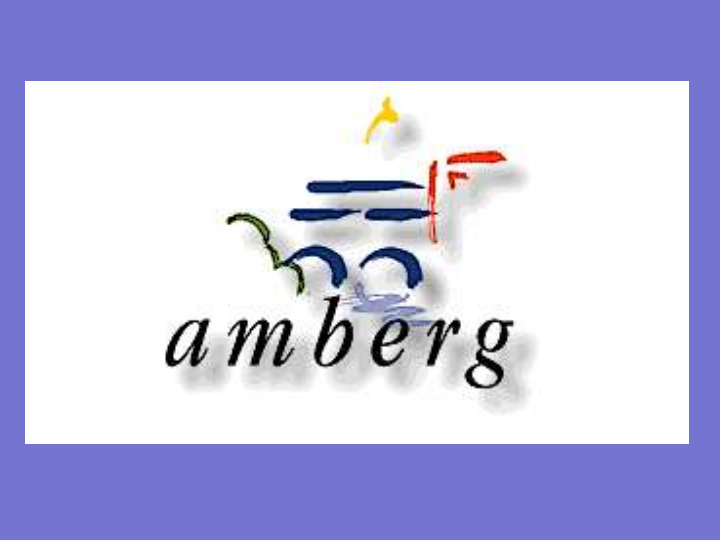



Facts about Amberg • Population : 45,000 inhabitants • First mentioned in 1034 under the name of Ammenberg. • Located in Bavaria, in the Upper Palatinate, about 40 miles east of Nuremberg.
Aerial picture From above the old city centre – today‘s inner city - looks like an egg.
Market square & Town Hall • the Gothic Town Hall (1358) and the so-called “wedding fountain“
Gregor-Mendel-Gymnasium
STRUCTURE MITTELSCHUL- MITTLERE REIFE ABITUR ABSCHLUSS ordinary level A-levels ordinary level MITTEL-/ WIRTSCHAFTS- REALSCHULE Gymnasium SCHULE HAUPTSCHULE secondary grammar secondary secondary modern school school school modern school years 5 – 12 years 5 - 10 years 7 – 10 years 5 – 9 (10) (ages 11 – 18) (ages 11 - 16) (ages 11 – 15) (ages 13 – 16) GRUNDSCHULE elementary school years 1 – 4 (ages 6 – 10)
General facts o Bavarian pupils have to attend school for at least 9 years before starting to work o usually school starts at 8 am and ends at 1 pm but often there are lessons in the afternoon o at home Bavarian pupils have to do lots of homework o in most of the schools pupils do not wear school uniforms
subjects Typical subjects: Other subjects: O Mathematics O RE (religious education) O German O Other foreign languages O Foreign languages: English (1st foreign (optional): Spanish or ancient Greek language), French or Latin (2nd foreign or Italian or Russian or Chinese (3rd language) foreign language) O History O Economics O Physics, Biology and Chemistry O Social studies O Geography O Drama group O PE (physical education) O Music O Arts
GRUNDSCHULE elementary school + children start to attend school when they are 6 years old + at that level they are not streamed, i.e. all pupils of the same age attend the same school + they have lessons from 8 am to 12:15 am in years one and two and from 8 am to 1 pm in years three and four + after year four they are streamed: they have to decide whether they wish to attend a “Mittelschule“, “Realschule“ or “Gymnasium“
MITTELSCHULE secondary school + for pupils who wish to work as e.g. a mechanic or hairdresser later + years 5 – 9 (ages 11 - 15) + pupils finish secondary school education after year 9 + pupils can add a supplementary year (year 10) => more chances to get a better job
WIRTSCHAFTS- SCHULE secondary modern school + three different forms - form 1: starts after year 6 - form 2: starts after year 7 - form 3: starts after year 9 and “Qualifizierender Hauptschulabschluss“ + general education with a strong focus on economics + pupils leave school after year 10 (forms 1&2) or year 11 (form 3)
REALSCHUL REALSCHULE secondar secondary moder modern n sc school hool starts with year 5 extended general education (later pupils normally work in offices) various branches promotion of the different talents of the pupils pupils leave school after year 10 then they can go to “Fachoberschule“ and get the permission to go to a specialised university
GYMNASIUM grammar school + years 5 - 12 + advanced general education + various branches + A-levels after year 12 -> then pupils can go to a university
school leaving qualifications + “Hauptschule“: - “(Qualifizierender) Hauptschulabschluss“: - pupils normally start an apprenticeship as a mechanic or shop assistant + “Wirtschaftsschule“: - ordinary level (“Mittlerer Schulabschluss“): - pupils normally start an apprenticeship in an office + “Realschule“: - ordinary level (“Mittlerer Schulabschluss“): - pupils normally start an apprenticeship in an office + “Gymnasium“: - A- levels (“Allgemeine Hochschulreife“): - pupils normally go on to university without any entrance exams
Recommend
More recommend